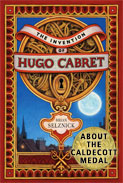Archives are cool, right?
So here is the vault for Special Collections at Rolvaag Library, St. Olaf College. (BTW, that's Ole Edvart Rølvaag author of Giants in the Earth, who roomed with my grandpa, Hjalmar S. Froiland, at St. Olaf in the 'aughts.)
They were made sturdy, useful, and of beautiful wood. I have a 36 drawer catalog myself, in which I keep craft supplies.
Then there are these amazing calf or goat skin covered volumes well over 150 years old. I love looking at the pages of these because the paper is so surprisingly white and quite sturdy. Paper used to be made of cotton rag, which has longer fibers and lacks the acid content of 50 year old wood pulp paper.
I like the mystery of the acid-free "boxes" in which the more deteriorated books are kept. I used to make these, when I worked in the Preservation lab at UW-Madison, for items to be kept in original bindings, preventing them from excessive deterioration.
I also am fond of the cotton "tape" used to hold a book together. There are a couple of other "tapes" used in book repair that are non-adhesive: linen tape on which to sew signatures, and tape for headbands.
The calfskin was a good choice for covers because it retained its color and remained supple for centuries.
So here is the vault for Special Collections at Rolvaag Library, St. Olaf College. (BTW, that's Ole Edvart Rølvaag author of Giants in the Earth, who roomed with my grandpa, Hjalmar S. Froiland, at St. Olaf in the 'aughts.)
What's not to love about really old beautiful books and compact library shelving where you get to turn the crank to move the shelves? But wait, there's more --
Look at this beautifully carved book cradle. This (and other ones that are clear acrylic - useful but unattractive) are used for patrons wishing to look at books in the vault. The cradle helps protect the rare book from being opened too wide, and provides a convenient resting place for the book while it's being .read
They were made sturdy, useful, and of beautiful wood. I have a 36 drawer catalog myself, in which I keep craft supplies.
Then there are these amazing calf or goat skin covered volumes well over 150 years old. I love looking at the pages of these because the paper is so surprisingly white and quite sturdy. Paper used to be made of cotton rag, which has longer fibers and lacks the acid content of 50 year old wood pulp paper.
I like the mystery of the acid-free "boxes" in which the more deteriorated books are kept. I used to make these, when I worked in the Preservation lab at UW-Madison, for items to be kept in original bindings, preventing them from excessive deterioration.
I also am fond of the cotton "tape" used to hold a book together. There are a couple of other "tapes" used in book repair that are non-adhesive: linen tape on which to sew signatures, and tape for headbands.
The calfskin was a good choice for covers because it retained its color and remained supple for centuries.

























































